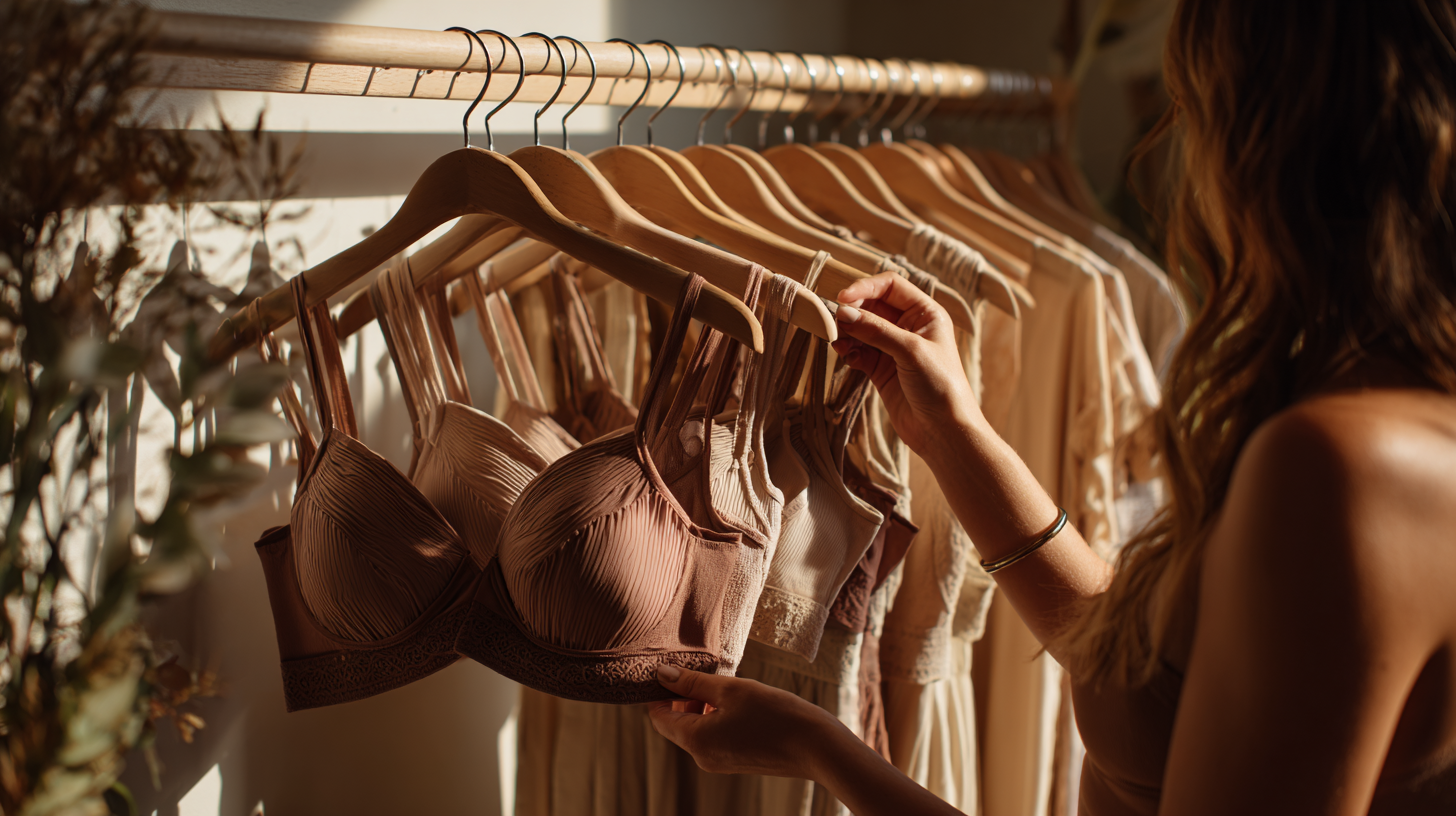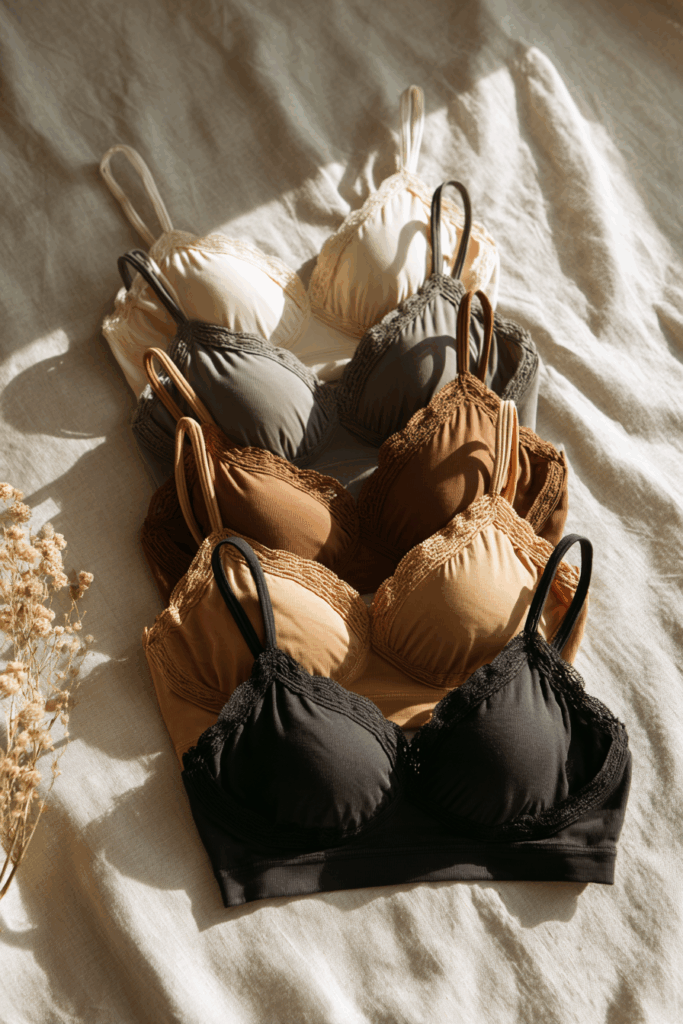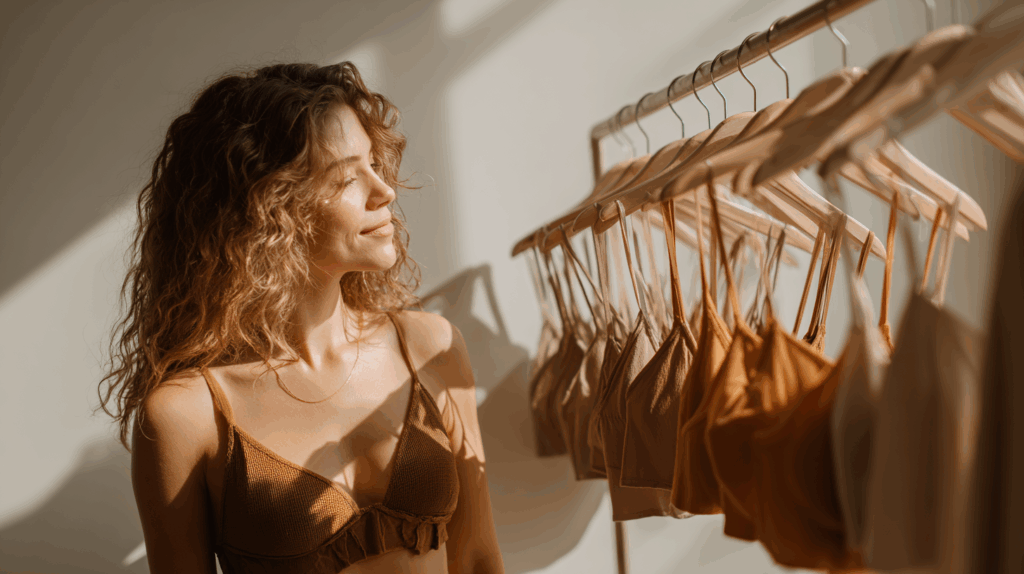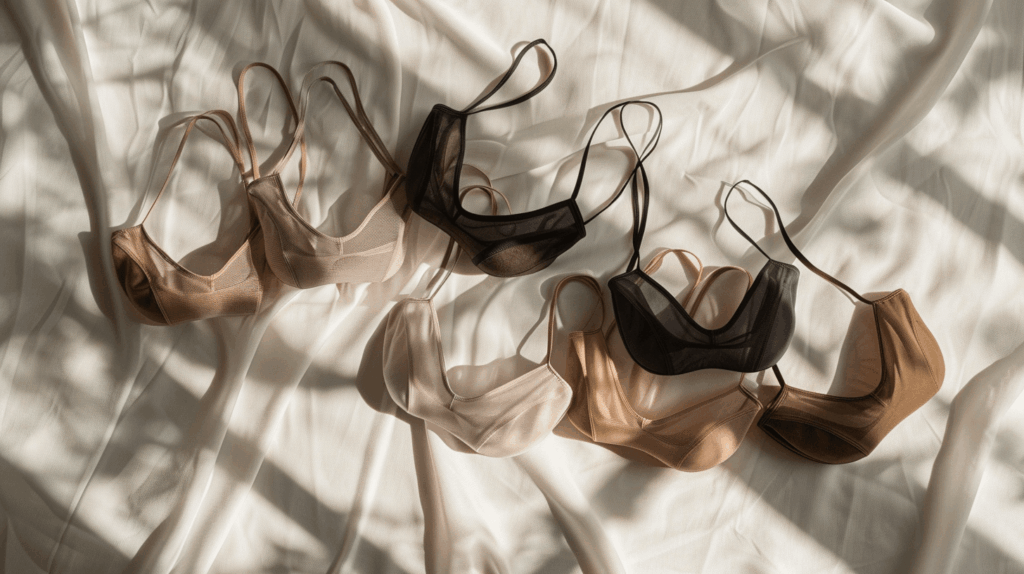
If there’s one debate that seems as endless as the search for a truly comfortable bra, it’s this: Should you go wireless, or is underwire really the best choice for support? Women everywhere have their loyalties—some can’t live without the “lift” of an underwire, while others swear by the barely-there comfort of wireless bras. But beneath the opinions and marketing claims, what does the science actually say? Is underwire bad for you? Are wireless bras supportive enough, even for larger busts? And how do you choose what’s right for your everyday life, body, and wardrobe?
Whether you’re shopping for your first “grown-up” bra or reassessing your needs after years of wearing the same style, understanding the facts about support, health, and comfort is essential. In this guide, we’ll break down the differences between wireless and underwire bras—how they work, what they offer, and what fitters, healthcare professionals, and real women are saying in 2025.
Let’s get started on your journey to a bra that finally works for you, not against you.

Understanding the Basics: Wireless and Underwire Bras Defined
At first glance, the difference between a wireless and underwire bra seems simple—one has a metal or plastic wire sewn into the cup’s base, while the other relies solely on fabric and stitching for shape. But the distinction goes much deeper.
Underwire Bras:
Underwire bras feature a thin, semi-circular wire (usually metal, sometimes plastic) that runs along the bottom and sides of each cup. This wire is encased in fabric and is meant to provide structure, lift, and definition—especially for those who want more shaping or have fuller busts. Underwire bras come in endless variations: push-up, plunge, balconette, t-shirt, minimizer, and more.
Wireless Bras:
Also called “soft cup” or “wire-free” bras, these omit the underwire entirely. Support comes from the design of the cup, the strength of the band, the cut of the fabric, and sometimes gentle internal slings or seams. Wireless bras range from ultra-minimalist bralettes to structured everyday bras with full coverage and side support.
A quick note: There’s nothing inherently “basic” about either style. Modern innovation means both types can be beautiful, high-tech, and suitable for a wide range of bodies and wardrobes.
Comfort: The Real-World Experience
Ask 100 women what makes a bra comfortable, and you’ll get 100 different answers. But after decades of research, surveys, and endless online reviews, a few themes have emerged.
Wireless bras are often praised for:
- A “barely there” feel—no poking, prodding, or digging into skin
- Gentle support that moves with your body
- Less risk of red marks or pressure points under the bust
- Being the top pick for lounging, travel, or long workdays
- Fewer issues with metal allergies
Underwire bras are favored for:
- A lifted, rounded, or more defined silhouette (especially under fitted clothes)
- Preventing “uni-boob” (where breasts aren’t separated in a bra)
- Extra support for larger cup sizes, high-impact activities, or certain outfits
But comfort isn’t just about features—it’s about fit. Fitters universally agree: an ill-fitting underwire bra is far worse than a well-fitted wireless, and vice versa. The underwire shouldn’t dig, sit on breast tissue, or move throughout the day. A wireless bra shouldn’t ride up, squash, or leave you unsupported. Many women, after years of “dealing with” the pain of underwire, find relief and even improved posture by switching to a high-quality wireless bra.
Fit expert Sue Williamson from Bravissimo explains: “The right bra is the one you forget you’re wearing. For some, that’s a seamless wireless bralette. For others, it’s an underwire bra that feels like a second skin. Don’t settle for discomfort—there’s a perfect fit for everyone.”
Support: Do You Really Need Underwire for Lift?
Let’s tackle the biggest myth: that only underwire bras can provide real support.
Traditionally, underwire bras were designed to give lift and structure, especially for fuller busts. The wire acts as a “scaffold,” helping distribute weight and separate the breasts for a lifted look. This is why many people with D cups or larger have gravitated toward underwire for decades.
But the truth is, support is about much more than a piece of metal. Modern wireless bras use:
- Firm, double-layered or molded fabrics (like high-gauge microfiber or organic cotton blends)
- Wide, elasticized bands that anchor below the bust
- Strategic seaming, side panels, or hidden “sling” structures to lift and shape
- Cups designed to encapsulate each breast, not just compress them
A 2020 study published in the Journal of Textile Science & Engineering found that well-designed wireless bras can offer comparable support to underwire styles, especially for women up to a DD cup. For those with larger busts, some wireless bras with reinforced bands and “architectural” cup design (sometimes called “structured wireless”) provide excellent lift and separation.
Professional fitter Jane Farrell notes, “Most women wear bras that are too loose in the band, which causes the underwire to do all the work—and often dig in painfully. A firm, supportive band and the right cup size matter far more for lift than whether or not you have a wire.”
The bottom line? Underwire can help with shaping and lift, but a thoughtfully engineered wireless bra offers real support—sometimes with greater comfort and flexibility.
Health Implications: Is Underwire Bad for You?
There’s a lot of mythology around underwire bras. Some of it comes from viral emails or social media posts warning that underwires block lymphatic drainage, cause breast cancer, or even disrupt blood flow. Let’s look at the evidence.
Breast Cancer:
Major health organizations, including the American Cancer Society, state clearly: there is no credible scientific evidence that wearing an underwire bra increases the risk of breast cancer. Multiple large-scale studies have found no link.
Lymphatic Drainage:
Concerns about underwires blocking lymph flow are mostly unfounded—if the bra fits properly. An underwire that digs into breast tissue, especially along the side or underarm, could theoretically cause discomfort or swelling over time, but no research has shown long-term harm in healthy individuals.
Nerve or Skin Issues:
Metal underwires can sometimes break through fabric, poke, or even cause nerve pain or skin infections if worn for too long, especially in poorly fitting bras. Metal allergies (especially to nickel) can also cause redness or rash.
General Discomfort:
The most common health complaint with underwire is plain old discomfort—red marks, pressure points, chafing, and the “desperate to take it off at the end of the day” feeling. Prolonged irritation isn’t dangerous, but it does signal your bra isn’t working for your body.
Wireless bras, on the other hand, avoid many of these pitfalls. They’re popular for post-surgery wear, pregnancy, and for anyone healing from rashes or skin irritation.
Dr. Alicia Thompson, a women’s health specialist, advises, “If you find yourself constantly adjusting your underwire bra or noticing pain, switch to wireless for a while. The relief can be immediate, and you might discover you prefer it.”
Style and Versatility: Where Each Bra Shines
Beyond health and comfort, there’s the question of style. Underwire bras are often chosen for more formal or structured outfits. They create a lifted, rounded shape, work well under fitted tops or dresses, and can provide the look some women want for special occasions or photos.
Wireless bras excel in versatility. Many women now wear them not just at home, but to the office, on errands, even to yoga class. Bralettes—once seen as “teenage” or loungewear—have evolved into fashion-forward staples with elegant straps, minimalist lines, and smooth finishes that disappear under clothes.
Some wireless bras even feature built-in padding, removable inserts, or clever seaming to mimic the shape of underwire bras, but with none of the rigid structure. For travel, long flights, or days when comfort is a must, wireless is often the hands-down winner.
Sustainability and Material Safety
With sustainability and health now at the forefront of many shoppers’ minds, the construction of your bra matters. Underwire bras often contain more metal, plastic, and synthetic foam, making them less biodegradable and harder to recycle. If the underwire breaks, the entire bra often gets tossed—even if the fabric is fine.
Wireless bras, especially those made from organic cotton, TENCEL™, or OEKO-TEX® certified fabrics, are often more eco-friendly. They contain fewer components, are easier to care for, and are less likely to end up in landfill after a short life.
Regardless of style, always look for:
- OEKO-TEX® or GOTS certification to ensure materials are free from toxic dyes and finishes
- Minimal foam padding (or removable inserts you can replace)
- Metal hardware that’s nickel-free and securely sewn
- Brands that transparently share their sourcing and production practices
How to Choose: Practical Tips from Fitters and Professionals
So how do you decide which type of bra is best for you? It comes down to personal needs, lifestyle, and body shape—but also a willingness to experiment.
When to try wireless:
- You value all-day comfort and don’t need dramatic lift
- You’re dealing with skin irritation, healing from surgery, or are pregnant/nursing
- You prefer minimalist style, bralettes, or natural silhouettes
- You travel, lounge, or work from home and want zero restriction
When to stick with underwire:
- You want maximum shaping and support under fitted or formal clothing
- You have a larger bust (E cup or higher) and haven’t found a supportive wireless option yet
- You like a defined, separated look (no uni-boob)
- Your job or activities require extra structure (e.g., for sports, uniforms)
What to look for, no matter what:
- A supportive band: 80% of support comes from the band, not the cups
- Cups that fully enclose the breast tissue, without gaping or spilling
- Straps that don’t dig or slip off your shoulders
- Materials that breathe and feel good against your skin
- A bra that you can wear all day without thinking about it—comfort is key
When possible, get fitted in person or use reputable online fitting guides. Sizing can vary widely between brands and styles, especially for wireless bras, so don’t be afraid to try multiple sizes or return what doesn’t work.

FAQs
Can wireless bras be supportive enough for larger busts?
Yes, but it depends on design. Look for wireless bras with wide bands, reinforced cups, and side support panels. Many D+ wearers find new generation wireless bras as supportive as underwire, especially for daily wear.
Can underwire bras cause breast cancer?
No reputable study supports this claim. The American Cancer Society and other medical groups have found no link between underwire bras and cancer risk.
How often should I replace my bra?
Generally, every 6–12 months for regular wear, or as soon as you notice loss of support, stretched bands, or poking wires. Wireless bras may last longer if made from quality materials.
Is it bad to sleep in a bra?
Not if it’s comfortable and non-restrictive. Many women sleep in soft, wireless bras or bralettes for gentle support.
Conclusion
There’s no universal “best” when it comes to wireless versus underwire bras. The ideal bra is the one that feels good, fits well, and supports your lifestyle—not just your bust. Wireless bras have come a long way and now offer comfort and support for almost everyone, while underwire remains a solid choice for certain shapes, styles, and preferences.
What matters most is listening to your body, being willing to try new options, and never settling for discomfort. Whether you choose the flexibility of a wireless bra or the definition of underwire, make sure your choice is informed, intentional, and based on what feels right for you.
For more on finding the healthiest, most comfortable bra materials, check out guides on OEKO-TEX® certifications, fitting tips, and reviews from real women and professional fitters. Your best bra is out there—and you deserve it.


